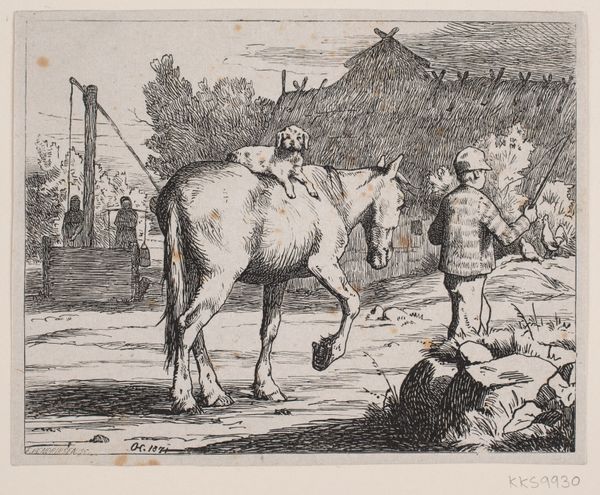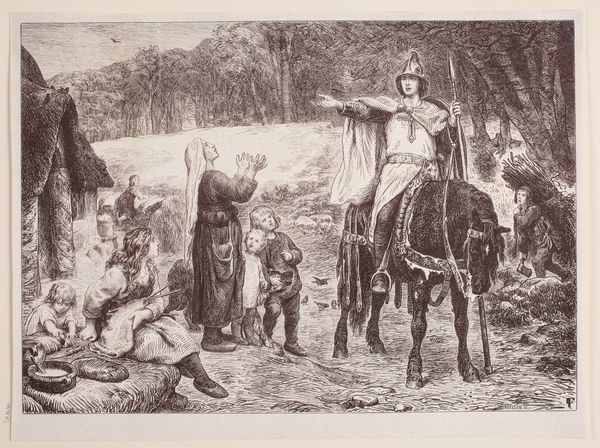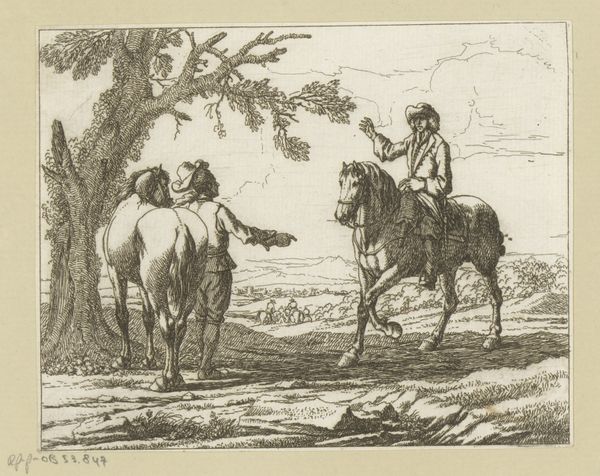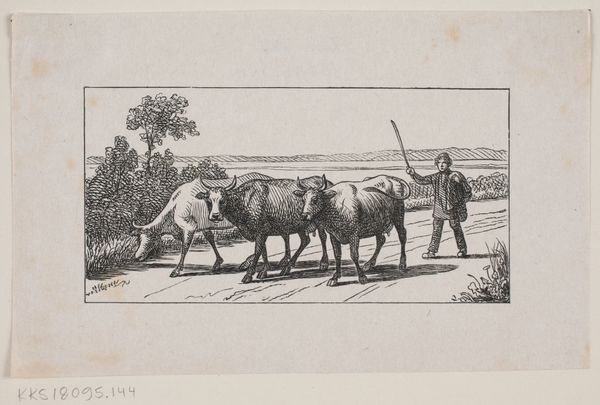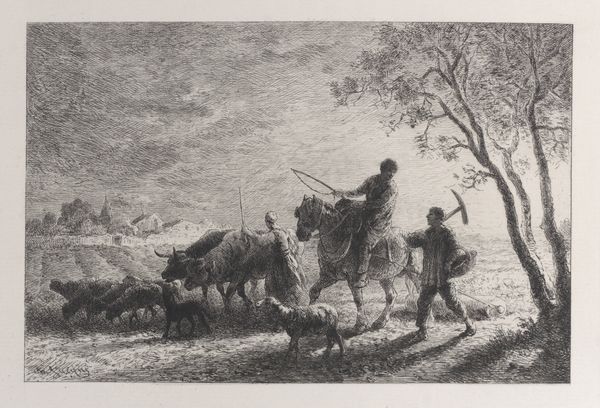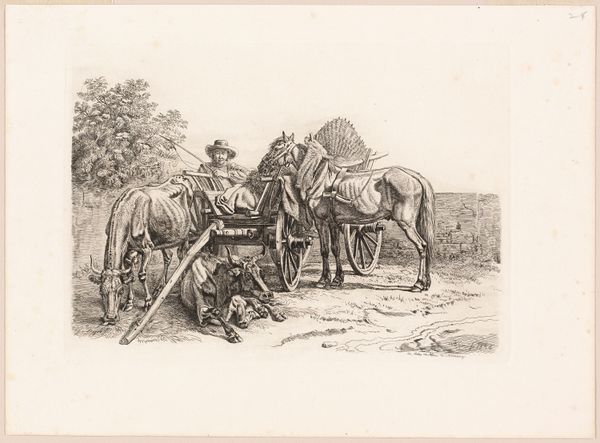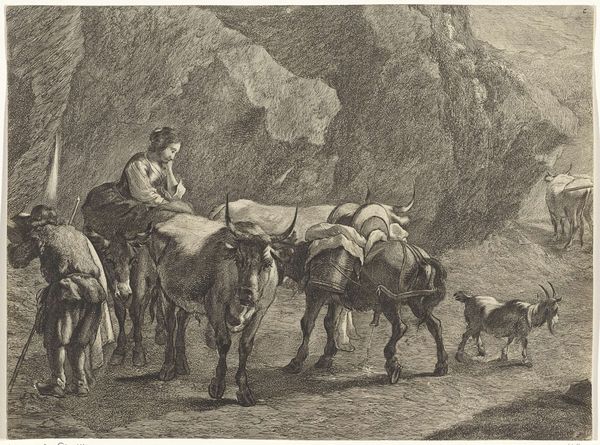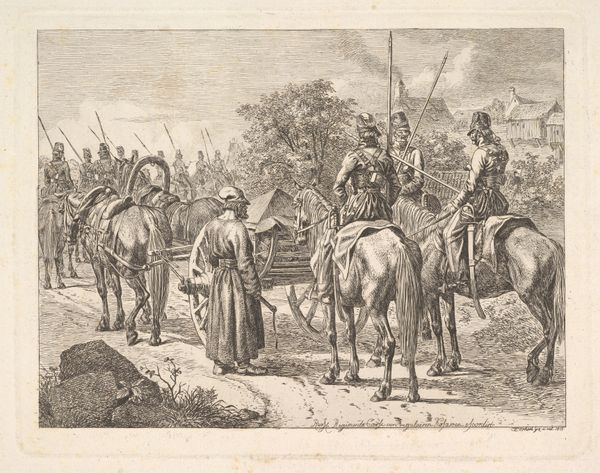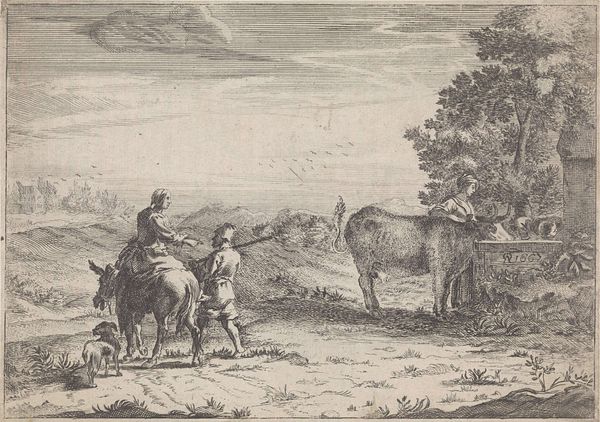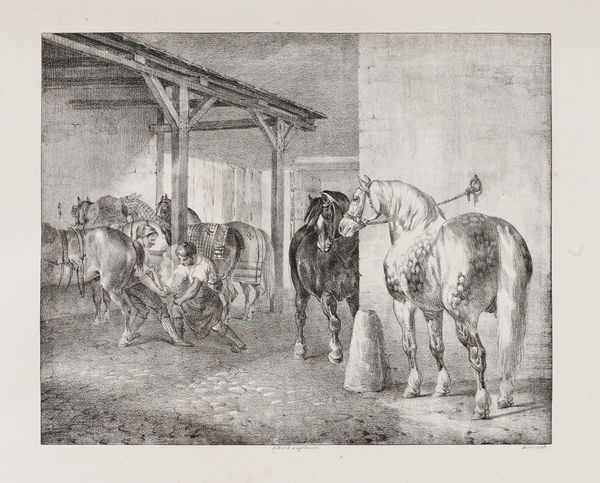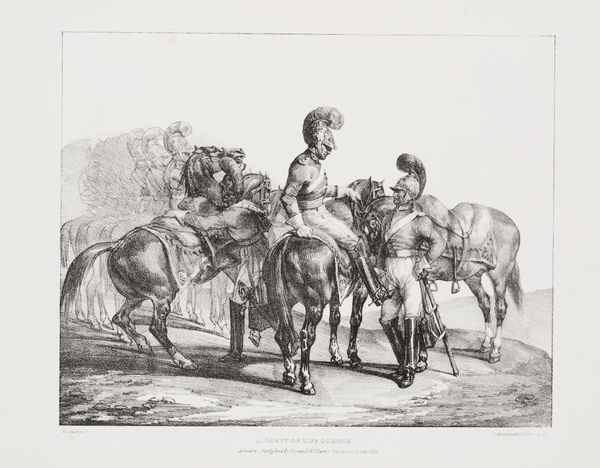
print, etching, woodcut, engraving
# print
#
etching
#
landscape
#
figuration
#
woodcut
#
genre-painting
#
engraving
Dimensions: 125 mm (height) x 181 mm (width) (bladmaal)
Curator: This is J.C. Nielsen's "Ved Enghien. Bønderkoner vender hjem fra Paris," or, "View of Enghien. Peasant Women Returning Home from Paris," created in 1863. It's an engraving and etching, showcasing the artist’s skill with detailed lines. Editor: The texture and starkness grab me. The grey tones create a feeling of solemnity. Is that just from the burden of the load they carry, or is it something more? Curator: It’s interesting to consider that through a lens of class and gender. These women are literally weighed down, returning from Paris, presumably having sold goods or worked as laborers. Editor: Precisely! There's such contrast, too: they leave the perceived glamour of the city but their lives in the countryside are no less easy. They are wearing nearly identical tunics, while only their headwear stands as individualized adornment. The symmetry with those small goats could almost symbolize their servitude. Curator: Those "uniforms" do reinforce a kind of shared identity rooted in labour. The journey home is presented as arduous; this print speaks to a hidden narrative, where we explore the complexities of working-class women's lives outside of traditional bourgeois narratives. It asks us, who labors to sustain dominant culture? Editor: The animals are really remarkable symbolic images as well. The donkeys symbolize burden-bearing and labor while the goats, traditionally symbols of abundance, look downtrodden, with the donkeys moving slowly away from what looks to be their only opportunity to graze. Are they also symbolic of home? Curator: The landscape and town are shown far in the background, nearly inaccessible as the women leave the center of commercial and imperial power. I think the images resonate in modern context as discussions of accessibility come to fore within societal conversations, what we want versus what we have access to. Editor: Indeed, by drawing attention to the working class journey away from Paris, the work itself seems like a visual argument toward the rights and recognition of underserved laboring bodies everywhere. It forces a certain reckoning to realize the women’s perspective in 1863 parallels some very current social situations! Curator: Agreed. Nielsen's print prompts reflection, forcing us to contend with past and present-day class, gender, and identity struggles and to reconsider our assumptions about value. Editor: Definitely. The piece has definitely opened my eyes. There's much more at play than I first thought.
Comments
No comments
Be the first to comment and join the conversation on the ultimate creative platform.
